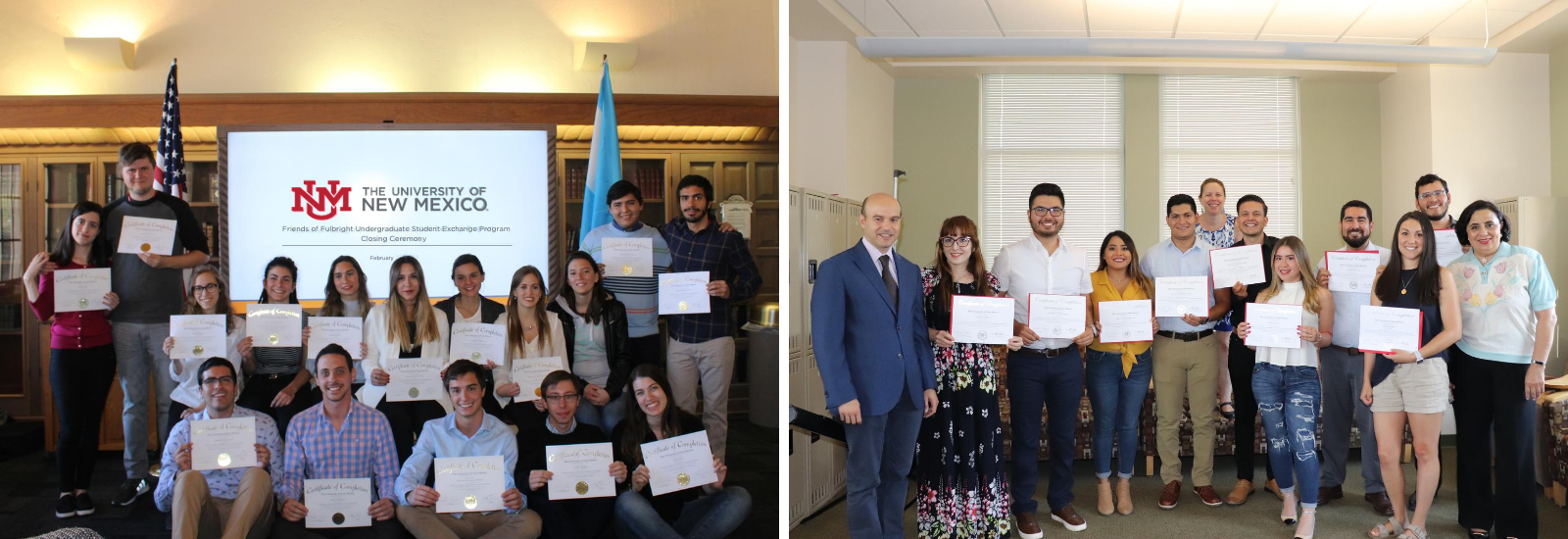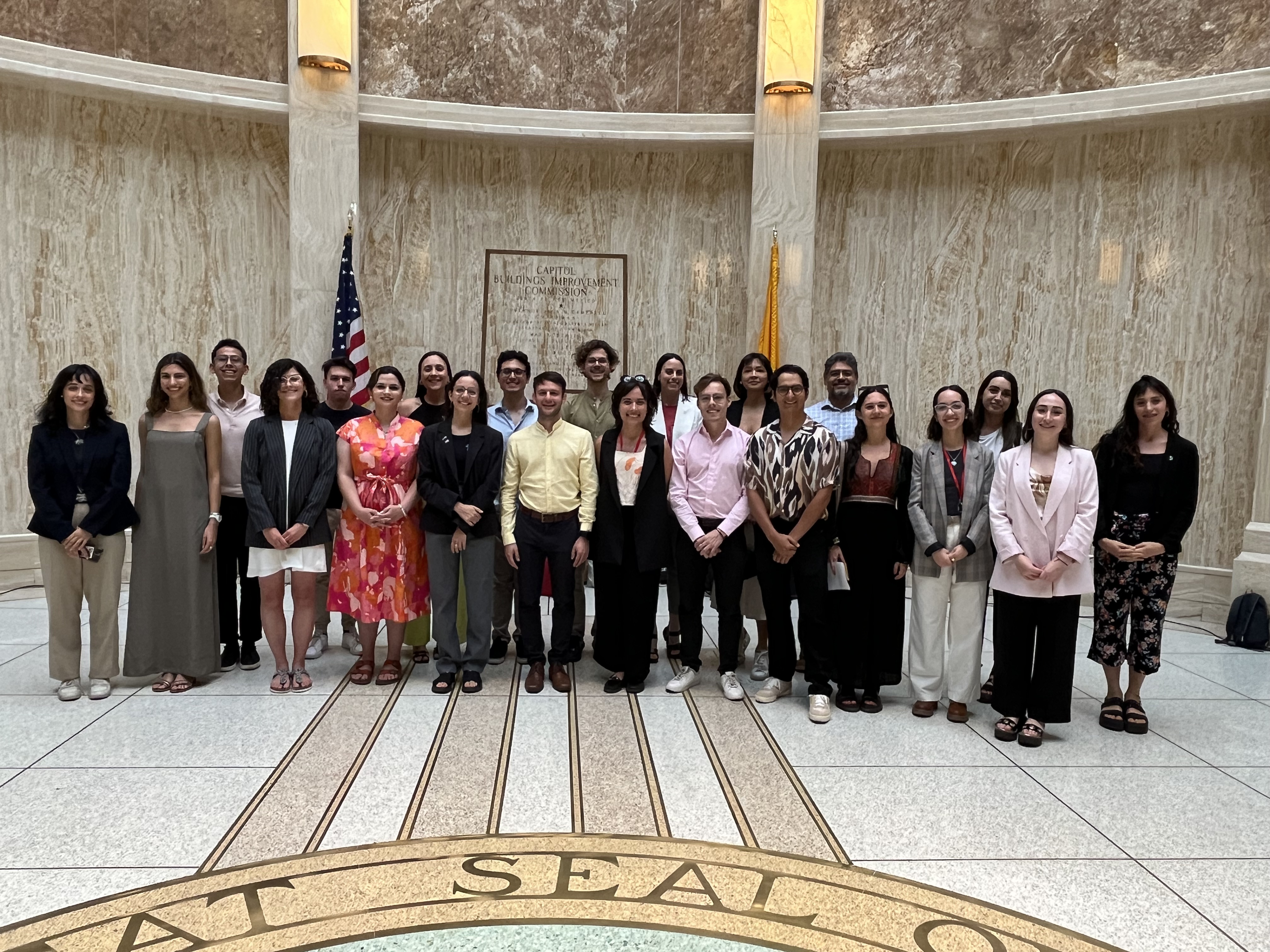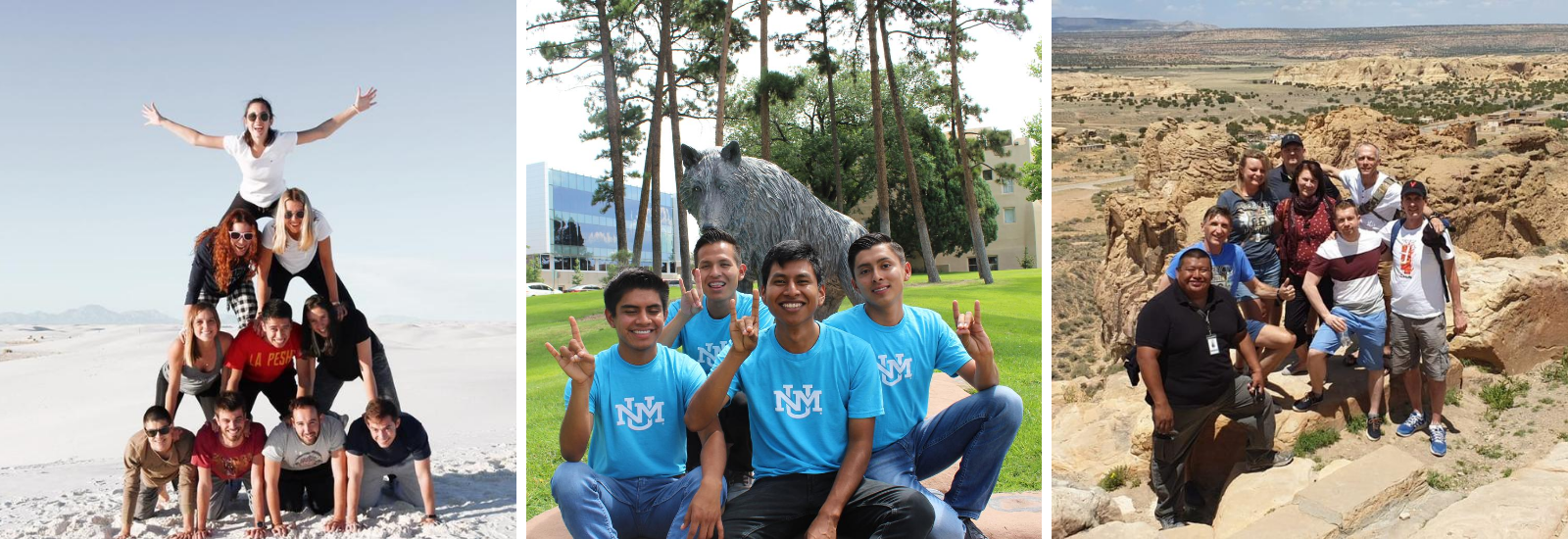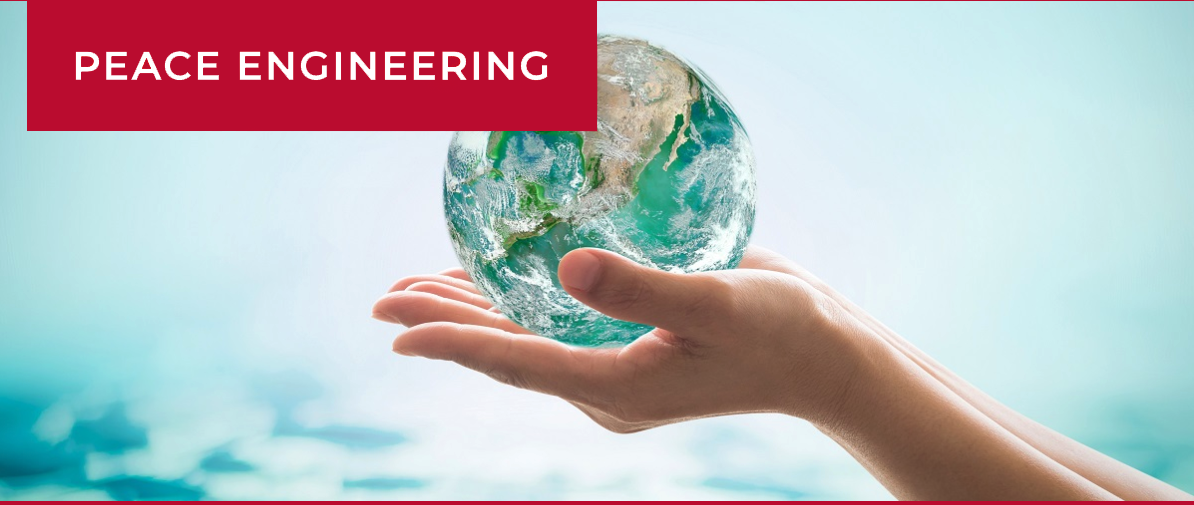
Wednesday, June 21
9:00am - 12:00pm USA Mountain Time
12:00pm - 3:00pm Argentina Time
Facilitated by:
Dr. Ramiro Jordan
Associate Dean of Engineering for International Programs
The University of New Mexico
9:00-10:00 AM MDT / 12:00-1:00 PM ART
Presenter: Bruce Cahan, Esq., Stanford University Management Science and Engineering Department
Description:Peace Engineering is an emerging field in search of money. Specifically, the inputs, outputs and transactional impacts of a world built to optimize peace are largely absent in direct and consistent form from financial decision making, investment, lending and market trading. Bruce Cahan leads research on the “financial engineering” that could support peace. Bruce will present an overview of his research and projects.
 Bruce Cahan is a Lecturer in Stanford University's Management Science and Engineering Department, a Lecturer at the Hasso Plattner Institute of Design (d.school), a Distinguished Scholar at Stanford's Human-Sciences and Technologies Advanced Research Institute's mediaX Program, and an active member of CodeX Fellow at Stanford’s Center for Legal Informatics. Bruce's course offerings at Stanford include Ethics of Finance and Financial Engineering (MS&E 148), Investing on the Buy Side of Wall Street (MS&E 449), Sustainable Banking (CEE 244A) and Redesigning Finance (d.school). As an Ashoka Fellow through Urban Logic, Bruce is creating the Space Commodities Exchange, GoodBank™(IO), an independent teaching bank for high-transparency, impacts-aware commercial bankers, and other projects.
Bruce Cahan is a Lecturer in Stanford University's Management Science and Engineering Department, a Lecturer at the Hasso Plattner Institute of Design (d.school), a Distinguished Scholar at Stanford's Human-Sciences and Technologies Advanced Research Institute's mediaX Program, and an active member of CodeX Fellow at Stanford’s Center for Legal Informatics. Bruce's course offerings at Stanford include Ethics of Finance and Financial Engineering (MS&E 148), Investing on the Buy Side of Wall Street (MS&E 449), Sustainable Banking (CEE 244A) and Redesigning Finance (d.school). As an Ashoka Fellow through Urban Logic, Bruce is creating the Space Commodities Exchange, GoodBank™(IO), an independent teaching bank for high-transparency, impacts-aware commercial bankers, and other projects.
Presenter: Mark Nelson, Director of Innovation, Peace Innovation Institute
Description: Mark explains how the Peace Innovation Institute is committed to reinventing peace through positive social change from the ground up.
 Former relief-worker, investment banker, and social entrepreneur, Mark Nelson founded and co-directs Stanford Peace Innovation Lab, where he researches mass collaboration and mass interpersonal persuasion. Mark focuses on designing, catalyzing, incentivizing, and generating resources to scale up collective positive human behavior change. He has described a functional, quantitative definition of peace, in terms of technology-mediated engagement episode quantity and quality across social difference lines; he has identified innovative, automated ways to measure peace, both at the neighborhood and global level; and he has developed a formal structural description for Peace Data.
Former relief-worker, investment banker, and social entrepreneur, Mark Nelson founded and co-directs Stanford Peace Innovation Lab, where he researches mass collaboration and mass interpersonal persuasion. Mark focuses on designing, catalyzing, incentivizing, and generating resources to scale up collective positive human behavior change. He has described a functional, quantitative definition of peace, in terms of technology-mediated engagement episode quantity and quality across social difference lines; he has identified innovative, automated ways to measure peace, both at the neighborhood and global level; and he has developed a formal structural description for Peace Data.
He leads the Global OPEN Social Sensor Array project, and designs technology interventions to measurably increase positive, mutually beneficial engagement across conflict boundaries. Mark’s mission is to create an entire new, profitable industry, where positive peace is delivered as a service. Other projects include EPIC Global Challenge and Peace Markets. Mark is also a researcher and practitioner at Stanford Persuasive Technology Lab, and a member of Stanford’s Kozmetsky Global Collaboratory.
Presenter: Margarita Quihuis, CEO, Peace Innovation Institute
Description: Margarita discusses the potential of peace engineering as the intersection of behavior design, technology, innovation and business. She believes in creating a culture of innovation and teaching collaboration across difference boundaries to catalyze a thriving peace technology industry.
 A behavior designer, social entrepreneur and mentor capitalist, Margarita Quihuis’s career has focused on innovation, technology incubation, access to capital and entrepreneurship. Her accomplishments include being the first director of Astia (formerly known as the Women’s Technology Cluster), a business incubator where her portfolio companies raised $67 million in venture funding, venture capitalist, Reuters Fellow at Stanford, and Director of RI Labs for Ricoh Innovations. She is currently a member of the research team at Stanford Persuasive Technology Lab, and co-directs the Stanford Peace Innovation Lab where she conducts research on innovation, game design thinking, persuasive technology & the potential of technology to change society for the better.
A behavior designer, social entrepreneur and mentor capitalist, Margarita Quihuis’s career has focused on innovation, technology incubation, access to capital and entrepreneurship. Her accomplishments include being the first director of Astia (formerly known as the Women’s Technology Cluster), a business incubator where her portfolio companies raised $67 million in venture funding, venture capitalist, Reuters Fellow at Stanford, and Director of RI Labs for Ricoh Innovations. She is currently a member of the research team at Stanford Persuasive Technology Lab, and co-directs the Stanford Peace Innovation Lab where she conducts research on innovation, game design thinking, persuasive technology & the potential of technology to change society for the better.
Her projects have included the study of collaboration and citizen engagement to foster government innovation - Manor Labs, bottoms-up post-disaster response and recovery - Relief 2.0 and advisory roles in citizen psy-op efforts such as the the Israel Loves Iran and Romancing the Border social media campaigns. She is currently part of the working group for the Stanford/Naval Postgraduate School/US Army Governance Innovation for Security and Development research project. She is a recognized thought leader in the areas of innovation, emergent social behavior and technology and has been part of Deloitte’s On Social Roundtable and Aspen Institute’s Dialogue on Open Innovation and Dialogue on Diplomacy and Technology.
10:00-11:00 AM MDT / 1:00-2:00 PM ART
Presenter: Dr. Manel Martinez-Ramon, UNM College of Electrical & Computer Engineering
Description: Dr. Martinez-Ramon introduces the evolution of AI, which was first inspired in the brain tissue, then evolved to mimic the persistence of memory, and nowadays tries to imitate the cognitive behavior of the brain. This gave rise to the present revolution, as well as the ethical consequences and social impact (good and bad) of these technologies. Now the fathers of AI claim that we ought to stop it, one of the main Google AI leaders suggests that AI turned sentient, and a worldwide prestigious AI expert wrote an article in the Times Magazine saying that AI will kill us.
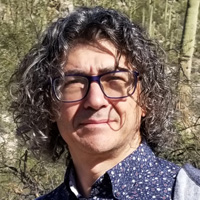 Dr. Martínez-Ramon has served as an associate professor at the Universidad de Alcalá, Universidad Politécnica de Cartagena and Universidad Carlos III de Madrid. During the last 15 years, he has taught nearly 30 different graduate and undergraduate courses in Electronics, Electric Networks, Electromagnetics, Signal Processing, Telecommunications or Data Processing. Since 2004 he exclusively taught in English in bi-lingual engineering degree programs in Spain. Dr. Martínez-Ramón has served the Spanish university as associate provost for infra-structures and environment, associate dean of the Politecnic School (school of engineering) of Universidad Carlos III de Madrid, director of teaching management, and director of several degrees in telecommunications engineering.
Dr. Martínez-Ramon has served as an associate professor at the Universidad de Alcalá, Universidad Politécnica de Cartagena and Universidad Carlos III de Madrid. During the last 15 years, he has taught nearly 30 different graduate and undergraduate courses in Electronics, Electric Networks, Electromagnetics, Signal Processing, Telecommunications or Data Processing. Since 2004 he exclusively taught in English in bi-lingual engineering degree programs in Spain. Dr. Martínez-Ramón has served the Spanish university as associate provost for infra-structures and environment, associate dean of the Politecnic School (school of engineering) of Universidad Carlos III de Madrid, director of teaching management, and director of several degrees in telecommunications engineering.
His research interests are in Machine Learning, where he has collaborated in numerous founded research projects in applications to signal processing, multimedia and speech processing, theory of decision and estimation, neuroimaging, and others. His over 70 peer-reviewed communications and journal papers are related to applications of Machine Learning to these areas of engineering. His current research is related to cognitive radio, smart grid, and neuroimaging. In 2003-2004, he did a post-doc in applications of Machine Learning to neuroimaging at the MIND Institute, UNM. Since then, he has actively collaborated with members of UNM faculty. He has participated as co-chair of several conference sessions and workshops.
Presenter: Eric Hamke, UNM College of Electrical & Computer Engineering
Description: Eric's research focuses on machine learning as applied to studying human physiology and speech production. He explains how robotics and communications can illustrate the different aspects of electrical engineering in a practical approach using a Systems Engineering approach to solving problems.
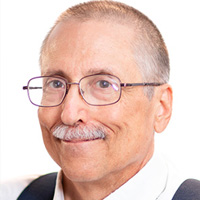 Eric Hamke has over 30 years experience with communication and control system evaluation and development. He has worked for BDM Corporation, Ball Aerospace Engineering, General Motors and Honeywell International. During this time he worked on fielding new digital communications systems, predictive maintenance systems, flight and guidance control systems and camera control and pointing systems. He is currently teaching Computer Logic Design, Signals and Systems and Digital Signal Processing. He is also the Proctor Mentor for the UNM ECE WHY lab. The WHY lab is an Electrical Engineering and Computer Department Resource open to all students who wish to pursue their own research or class projects. The lab’s goal is to provide the resources and mentoring needed to develop ideas into results. He has also developed applications as a source of additional example problems to augment his teaching.
Eric Hamke has over 30 years experience with communication and control system evaluation and development. He has worked for BDM Corporation, Ball Aerospace Engineering, General Motors and Honeywell International. During this time he worked on fielding new digital communications systems, predictive maintenance systems, flight and guidance control systems and camera control and pointing systems. He is currently teaching Computer Logic Design, Signals and Systems and Digital Signal Processing. He is also the Proctor Mentor for the UNM ECE WHY lab. The WHY lab is an Electrical Engineering and Computer Department Resource open to all students who wish to pursue their own research or class projects. The lab’s goal is to provide the resources and mentoring needed to develop ideas into results. He has also developed applications as a source of additional example problems to augment his teaching.
Presenter: Dr. Mohammad Yousuf, UNM Department of Communication & Journalism
Description: Dr. Yousuf discusses the roles of artificial intelligence in society, and the challenges it poses, from a mass communication perspective. He defines artificial intelligence as a form of media (e.g., newspaper, radio, television), which reproduces information to create stories. Dr. Yousuf explains how this new technology can help existing as well as exacerbate the problems they created. He also presents a framework, adopted from late media critic Neil Postman, to think critically about artificial intelligence.
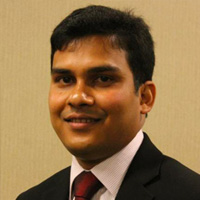 Dr. Mohammad Yousuf, the recipient of the 2022 SWECJMC Educator Award and many other teaching and research awards, embodies the combination of experience, expertise, innovativeness, and dedication that a journalism and communication scholar needs in the age of datafication and big data analytics. Through his collaborations with scholars from other disciplines such as computer science, Dr. Yousuf is leading mass communication and journalism scholarships in a new direction by utilizing the advances in computation, artificial intelligence and automated text analysis technologies.
Dr. Mohammad Yousuf, the recipient of the 2022 SWECJMC Educator Award and many other teaching and research awards, embodies the combination of experience, expertise, innovativeness, and dedication that a journalism and communication scholar needs in the age of datafication and big data analytics. Through his collaborations with scholars from other disciplines such as computer science, Dr. Yousuf is leading mass communication and journalism scholarships in a new direction by utilizing the advances in computation, artificial intelligence and automated text analysis technologies.
11:00 AM -12:00 PM MDT / 2:00-3:00 PM ART
Presenter: Prof. Patricia Arnera, Professor, National University of La Plata, Argentina
Description: The International Energy Agency (IEA) has pointed out that the world has a viable path to building a global energy sector with net zero emissions by the year 2050 (Net-Zero 2050), and this requires an unprecedented transformation of how it is produced, transports and uses energy around the world. Achieving this goal requires not only substantially accelerating the migration from fossil fuels to zero-emission energy sources, but also implies, and this is the most complex, a huge change in the energy demand platforms of most industrial and commercial activities as well as transportation and residential consumption. Therefore, there will be no human activity that can avoid participating, to a greater or lesser extent, in the energy transition that humanity is about to start.
There is no doubt that the reduction of CO2 emissions cannot be achieved exclusively with the incorporation of non-polluting generation sources. Given this, it is first necessary to act on demand to achieve reasonable consumption, without waste and optimizing global efficiency. Under these considerations, electricity becomes the core of the energy system. It will play a key role in all sectors, from transport and construction to industry. Electricity generation must achieve net zero emissions. The 50% of the TOTAL energy consumed in 2050 will be electric.
 Prof. Arnera holds the title of Electrical Engineer, awarded in 1981 by the Faculty of Engineering of the National University of La Plata, Argentine Republic. Since then, she has worked at the Institute of Technological Research for Electrical Networks and Equipment of the National University of La Plata, as a contracted researcher, to develop tasks in the Special Studies section of the operation of electrical power networks, being, since 1994, responsible for of this sector, since 1997 Deputy Director of the Institute, in charge of the Directorate. In the year 2000, she accessed the position of Director of the IITREE-LAT by background contest.
Prof. Arnera holds the title of Electrical Engineer, awarded in 1981 by the Faculty of Engineering of the National University of La Plata, Argentine Republic. Since then, she has worked at the Institute of Technological Research for Electrical Networks and Equipment of the National University of La Plata, as a contracted researcher, to develop tasks in the Special Studies section of the operation of electrical power networks, being, since 1994, responsible for of this sector, since 1997 Deputy Director of the Institute, in charge of the Directorate. In the year 2000, she accessed the position of Director of the IITREE-LAT by background contest.
The main tasks of her professional activity include the analysis of the transient operation of power systems, insulation coordination, dynamic and reliability studies, electrical and economic planning of power networks, modeling of electrical systems for different states of operation, analysis of transient measurement records for subsequent modeling, use of digital and analog models (particularly the Transient Network Analyzer -TNA- of the IITREE) for the study of switching surges.
Presenter: Michael Bernard, R&D S&E, Systems Research and Analysis, Sandia National Laboratories
Description: Dr. Bernard explains the process of experimenting with models before implementing strategies in a real system. The goals of Complex Adaptive Systems models are that they be explanatory and that through experimentation and data collection a medium-level of confidence in their predictive capability can be developed. Modeling results support our multi-faceted strategic designs for risk mitigation that is robust to uncertainty.
Michael L. Bernard is a Principal Member of Technical Staff in Information and Cognitive Sciences at Sandia National Laboratories. Michael’s work primarily involves the development of psychological and neurocognitive models of individual and group decision-making. He is currently directing several research and development projects that seek to model human decision-making and behaviors at the individual, group, and regional scale around the globe. Michael has contributed to over 80 articles as well as reports on numerous technical advances in the field of human factors, general psychology, and group decision-making.
Presenter:Dr. Ramiro Jordan, UNM School of Engineering
Description: A summary of the most essential points of the day and what they mean for the future of peace engineering.
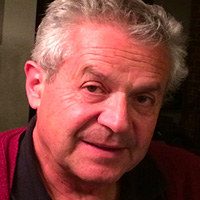 Dr. Ramiro Jordan is a scientist, innovator, educator, and entrepreneur. He is a member of the Electrical and Computer Engineering (ECE) department at The University of New Mexico, and he is currently the Associate Dean of Engineering for International Programs. His research activities include sustainability, Smart Grid, cognitive radio, multidimensional signal processing, and software development. As Chairman of the Board of the Ibero American Science & Technology Education Consortium (ISTEC) and founding member of the Peace Engineering Consortium, Dr. Jordan brings extensive experience in education, industry and entrepreneurship.
Dr. Ramiro Jordan is a scientist, innovator, educator, and entrepreneur. He is a member of the Electrical and Computer Engineering (ECE) department at The University of New Mexico, and he is currently the Associate Dean of Engineering for International Programs. His research activities include sustainability, Smart Grid, cognitive radio, multidimensional signal processing, and software development. As Chairman of the Board of the Ibero American Science & Technology Education Consortium (ISTEC) and founding member of the Peace Engineering Consortium, Dr. Jordan brings extensive experience in education, industry and entrepreneurship.

